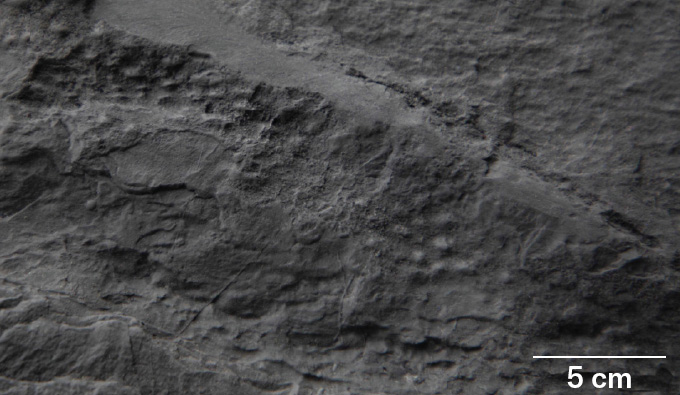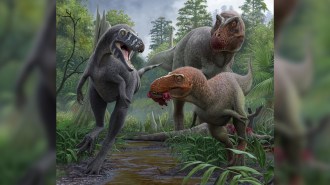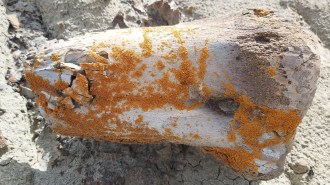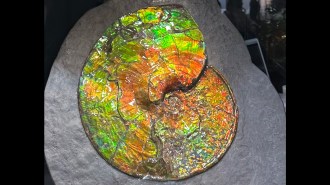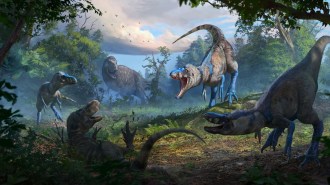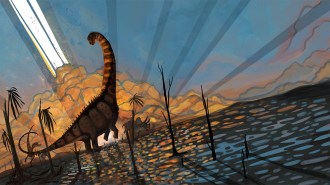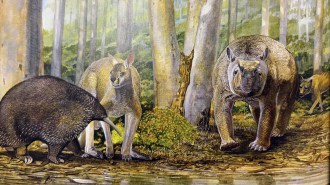What may be one of Earth’s earliest animals has a punk rock vibe
Remains once thought to be decomposed material could be spongelike creatures, researchers say
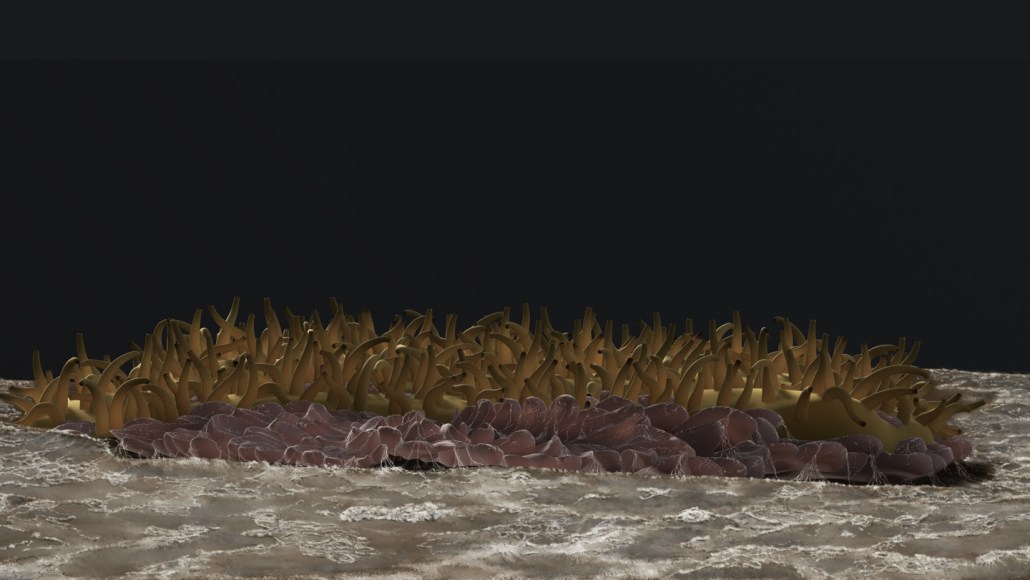
This illustration shows what one of Earth’s earliest animals — a newly identified spongelike creature named after a punk rocker due to its spiky appearance — might have looked like. It’s shown here settled on top of another organism.
Duncan McIlroy
